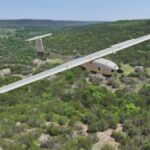
The U.S. Air Force and the F-35 Joint Program Office (JPO) are mum on the service's fiscal 2024 budget request for and the testing of the Northrop Grumman [NOC] AN/APG-85 Active Electronically Scanned Array radar, which is to replace the company’s AN/APG-81 radar for the Lockheed Martin [LMT] fighter. Last week, Air Force Lt. Gen. Richard Moore, the service’s deputy chief of staff for plans and programs, said that "we are getting very close to the new radar on the…














